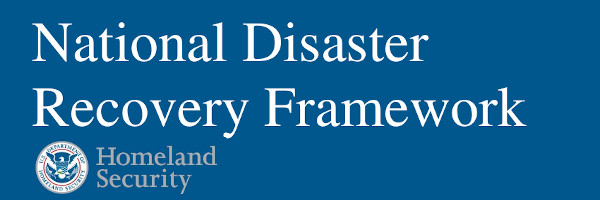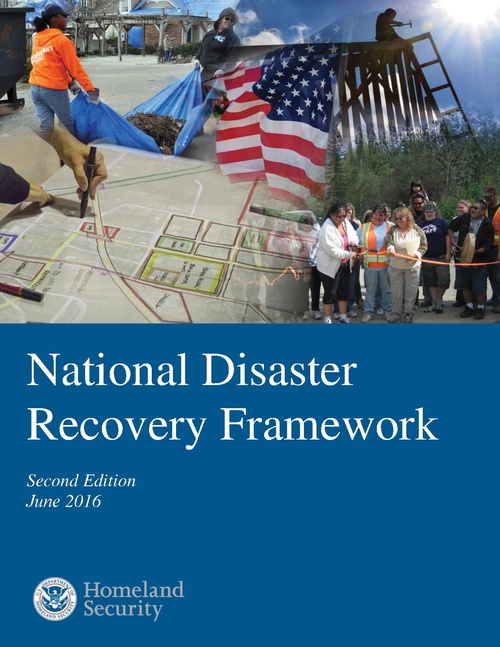National Disaster Recovery Framework
| Report | |
|---|---|
| Image | 
|
| Published | 2016-06-01 |
| Point(s) of Contact | Brenda Bannan |
| Organization(s) | National Institute of Standards and Technology |
| Where | Washington DC |

| |
The National Disaster Recovery Framework (NDRF) establishes a common platform and forum for
how the whole community builds, sustains, and coordinates delivery of recovery capabilities. Resilient and sustainable recovery encompasses more than the restoration of a community’s physical structures to pre-disaster conditions
Through effective coordination of partners and resources, we can ensure the continuity of services and support to meet the needs of affected community members who have experienced the hardships of financial, emotional, and/or physical impacts of devastating disasters.
The primary value of the NDRF is its emphasis on preparing for recovery in advance of disaster. The ability of a community to accelerate the recovery process begins with its efforts in pre-disaster preparedness, including coordinating with whole community partners, mitigating risks, incorporating continuity planning, identifying resources, and developing capacity to effectively manage the recovery process, and through collaborative and inclusive planning processes. Collaboration across the whole community provides an opportunity to integrate mitigation, resilience, and sustainability into the community’s short- and long-term recovery goals.
This Framework is always in effect, and elements can be implemented at any time. The structures, roles, and responsibilities described in this Framework can be partially or fully implemented in the context of a threat or hazard, in anticipation of a significant event, or following an incident. Selective implementation of the NDRF allows for a scalable and deliberate delivery of specific resources and capabilities and a level of coordination appropriate for each incident. Building on a wealth of objective and evidence-based knowledge and community experience, this Framework seeks to increase awareness of recovery capabilities across the whole community.
Key elements of the NDRF since it was first published in 2011 that are significant for all readers are the guiding principles and the Recovery core capabilities. The NDRF is guided by eight principles that when put into practice, maximize the opportunity for achieving recovery success. The guiding principles remind us of the importance of how we work together to support survivor needs and build resilience:
- Individual and Family Empowerment;
- Leadership and Local Primacy;
- Pre-Disaster Recovery Planning;
- Engaged Partnerships and Inclusiveness;
- Unity of Effort;
- Timeliness and Flexibility;
- Resilience and Sustainability; and
- Psychological and Emotional Recovery.
This edition of the NDRF highlights and further defines the eight Recovery core capabilities—critical functions to enable preparedness and recovery—as identified in the National Preparedness Goal. Three core capabilities are common to all five mission areas: Planning; Public Information and Warning; and Operational Coordination. The remaining five are specific to recovery:
- Economic Recovery;
- Health and Social Services;
- Housing;
- Infrastructure Systems; and
- Natural and Cultural Resources.
The NDRF focuses on ensuring that the Nation will be able to achieve recovery following any incident regardless of size or scale, and considers the full spectrum of threats and hazards, including natural, technological/accidental, and adversarial/human-caused. The NDRF helps ensure that all communities can coordinate recovery efforts to address their unique needs, capabilities, demographics, and governing structures. It encourages an inclusive recovery process, engaging traditional and nontraditional whole community partners, and provides a strategic and national approach to lead, manage, and coordinate recovery efforts while increasing the resilience of our communities.